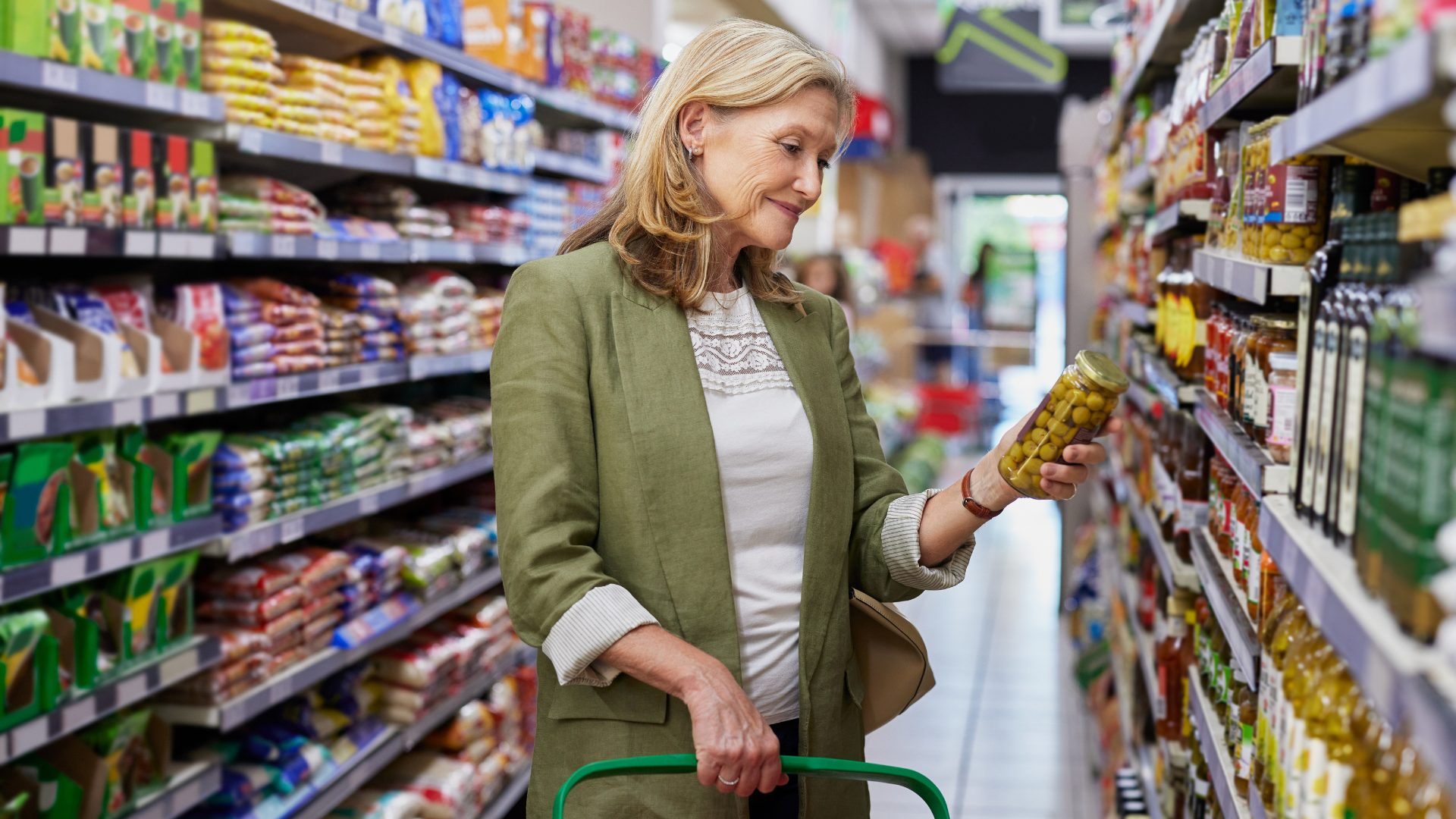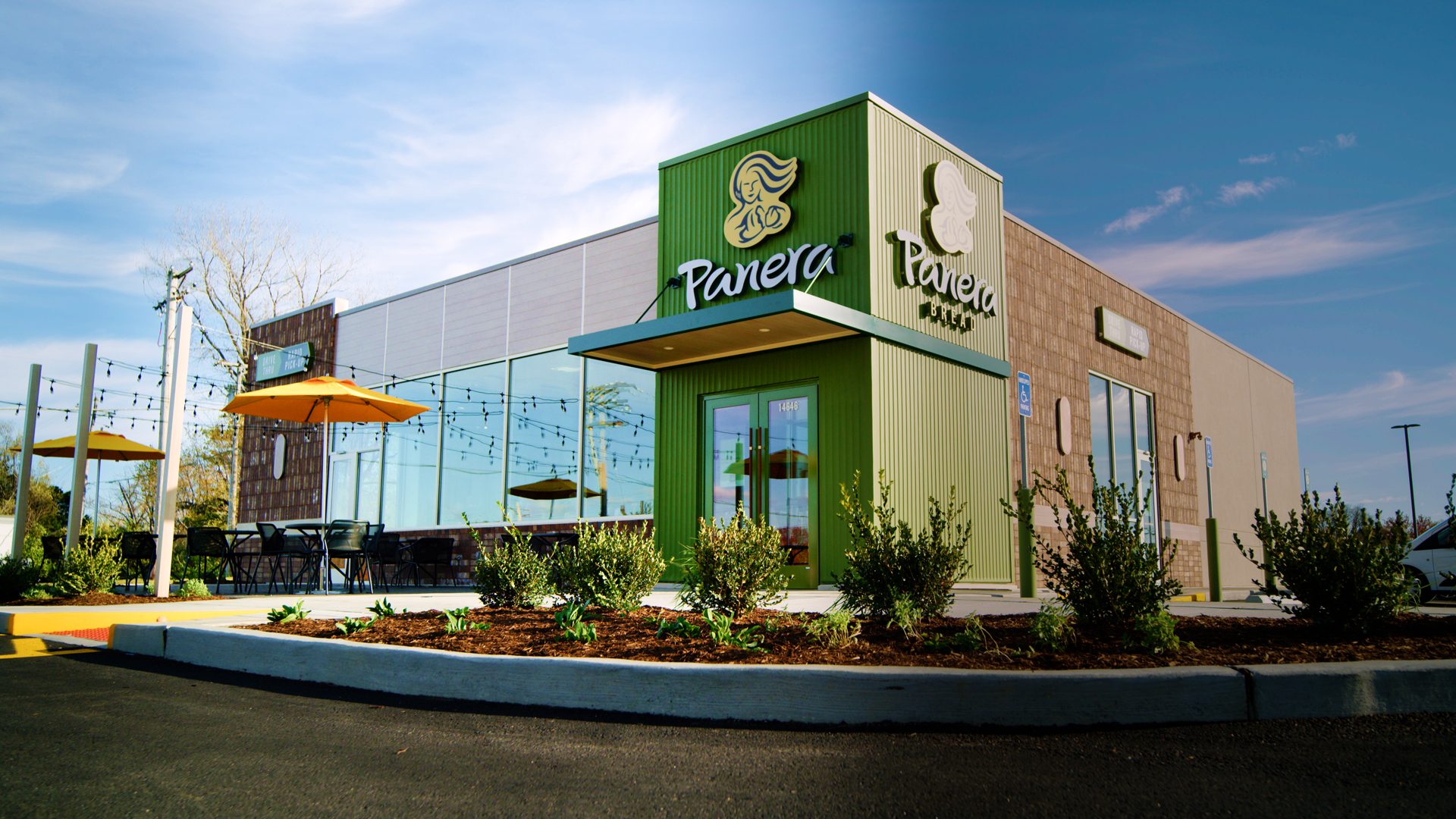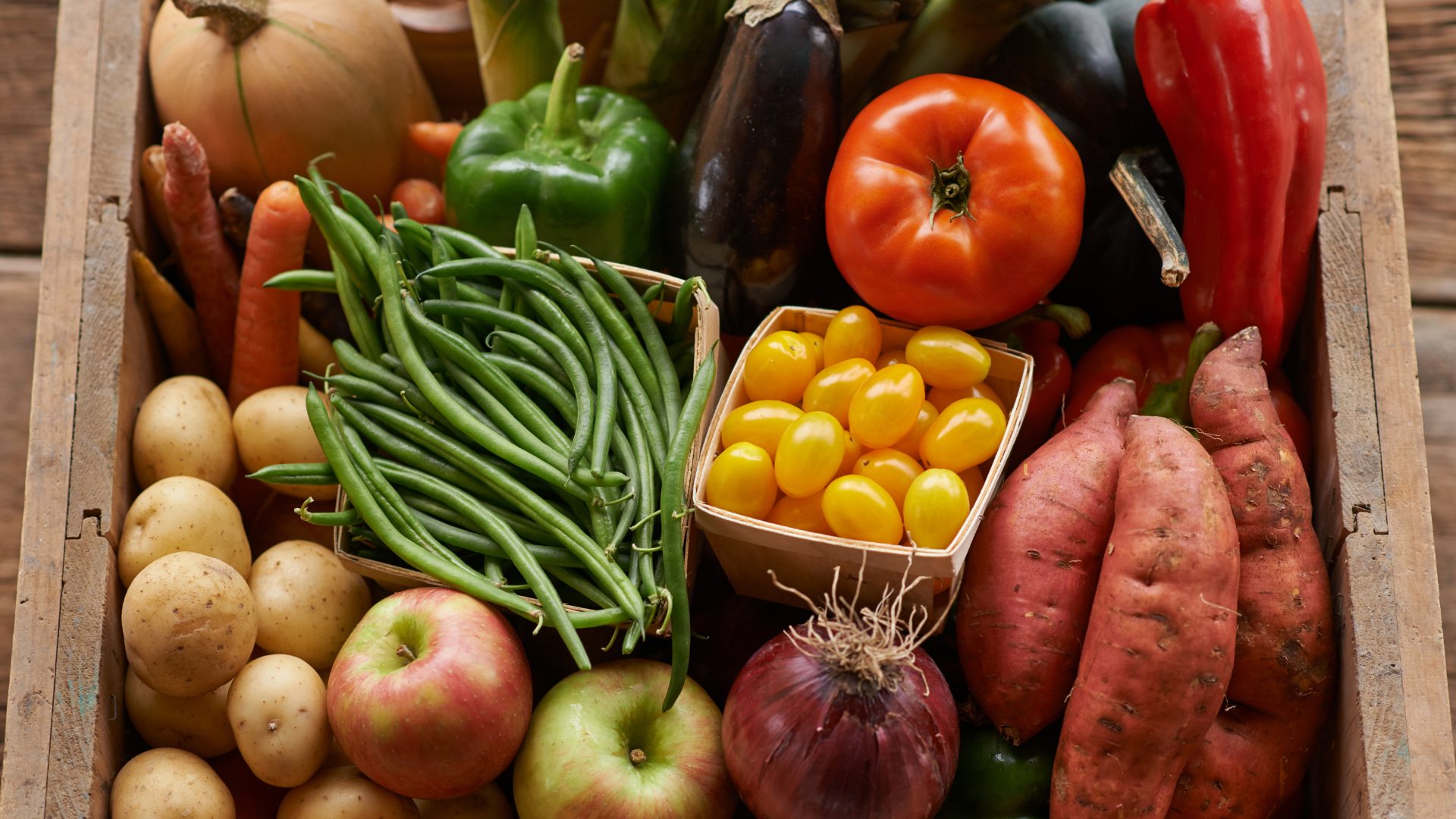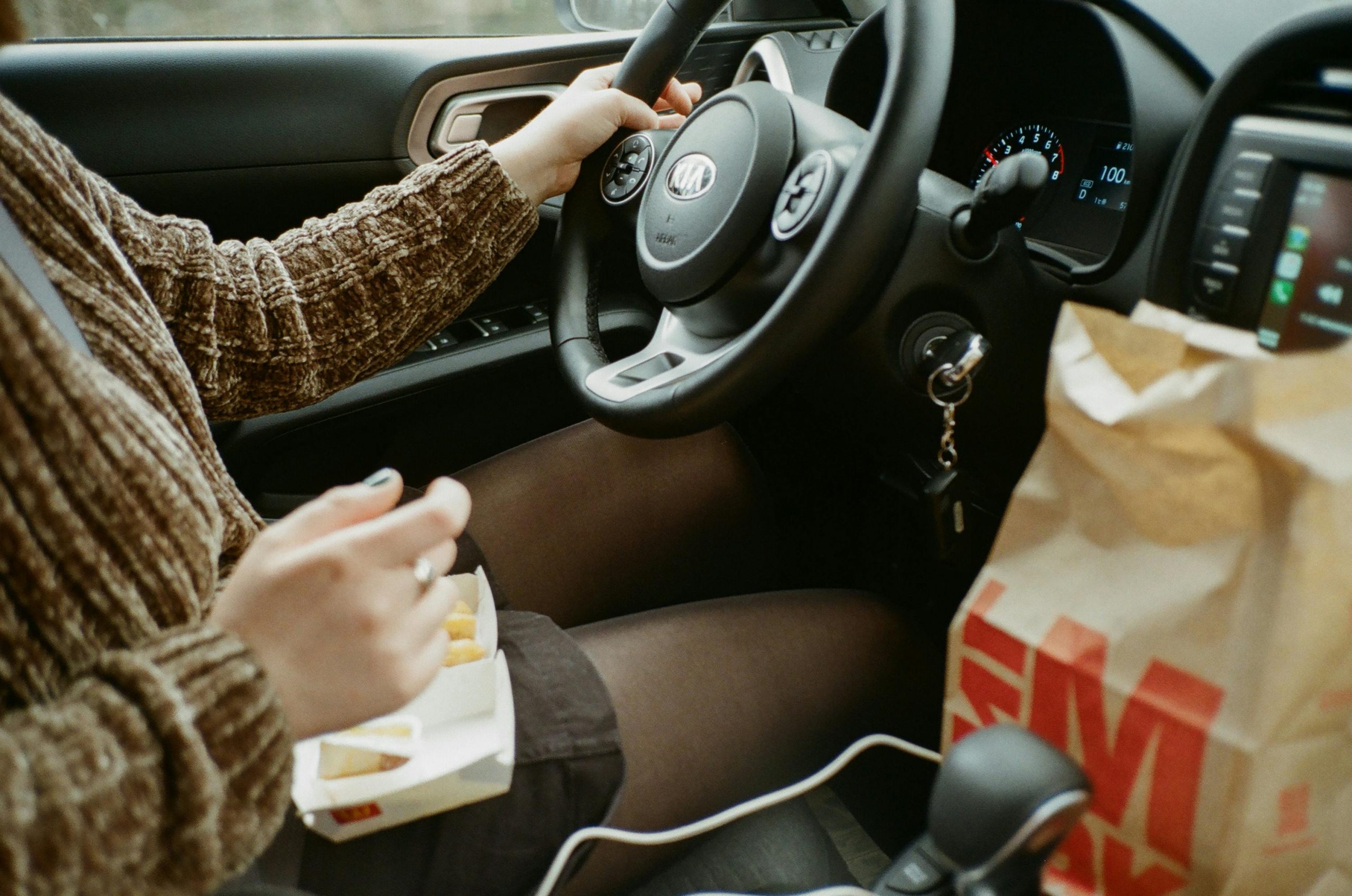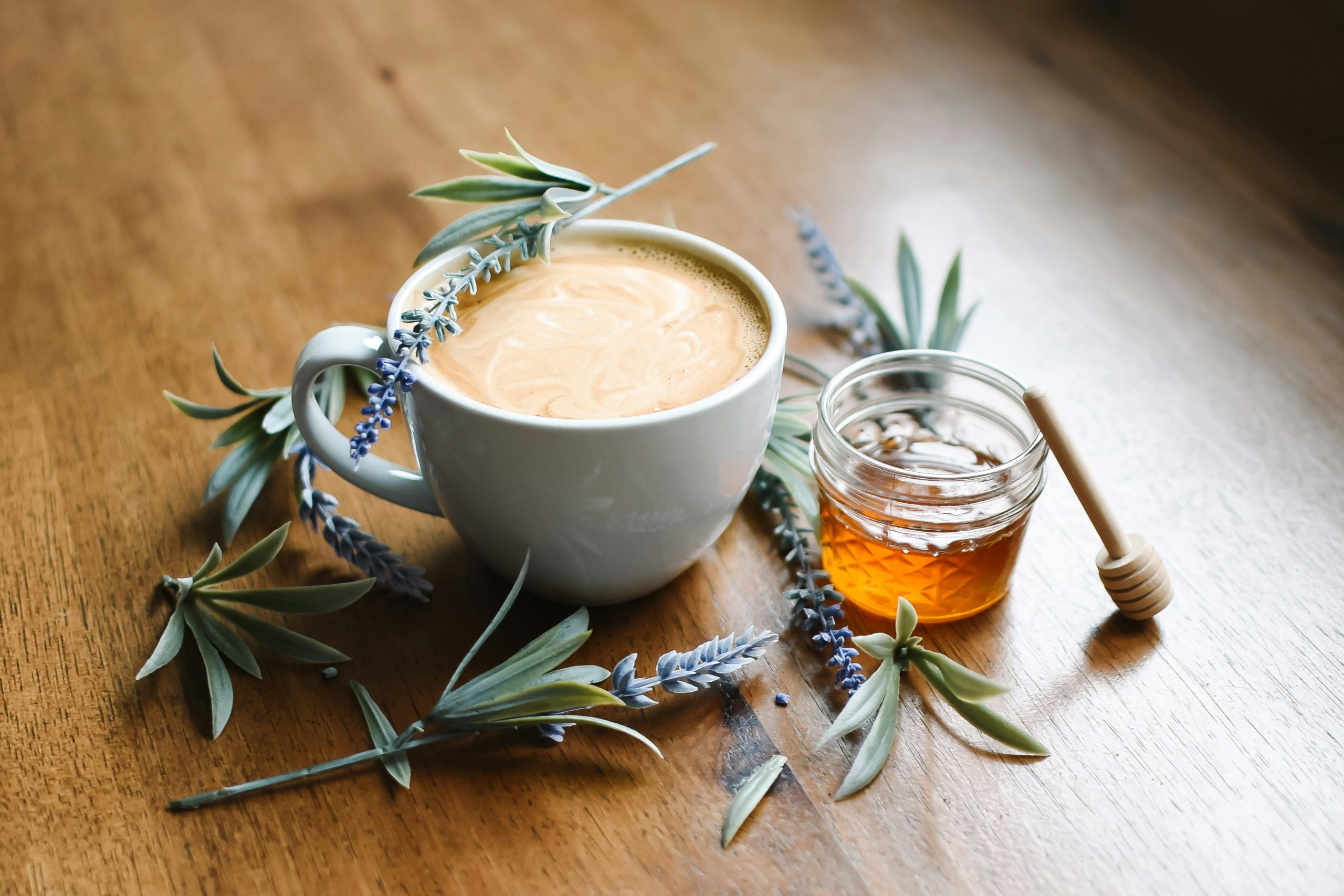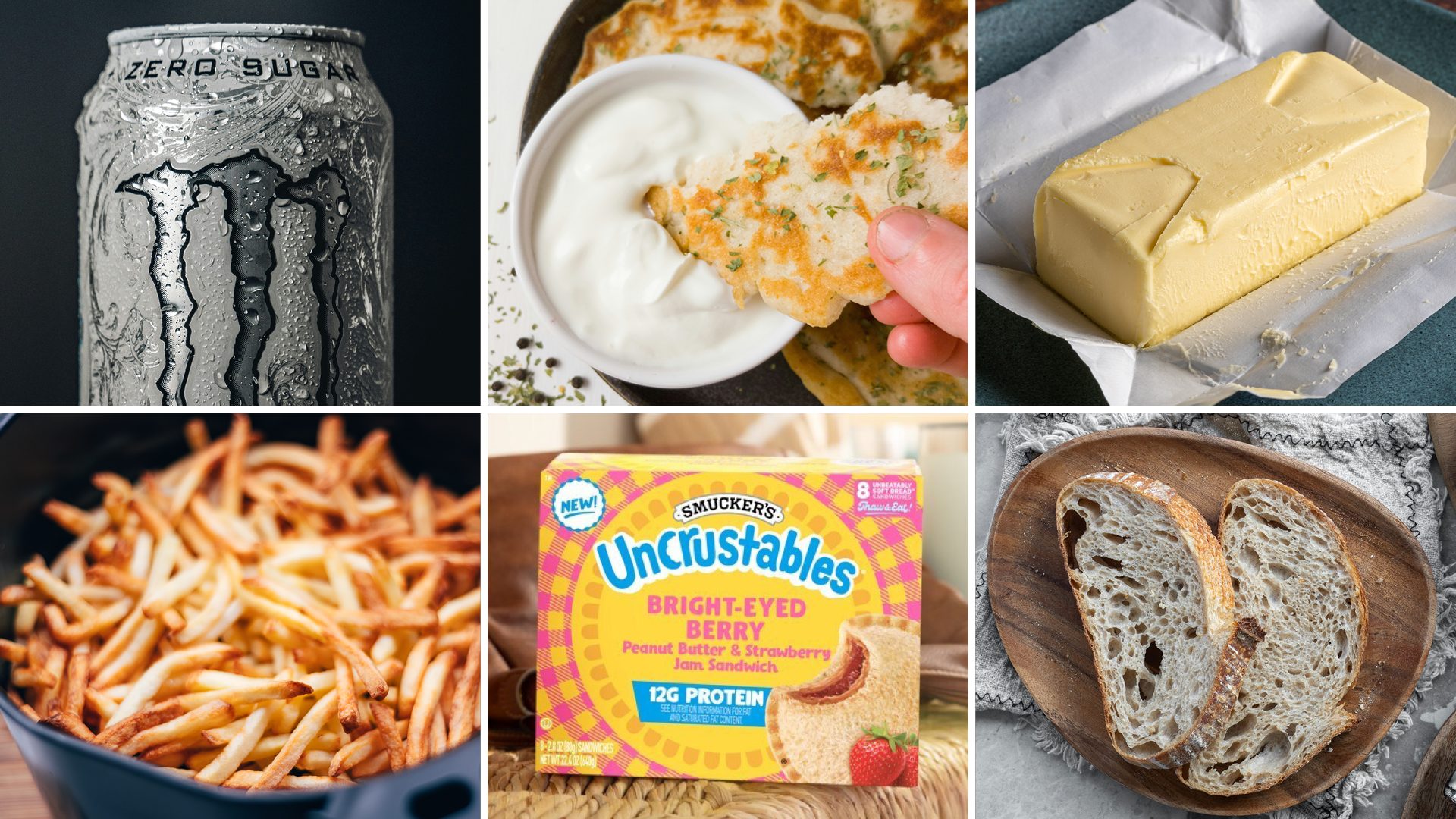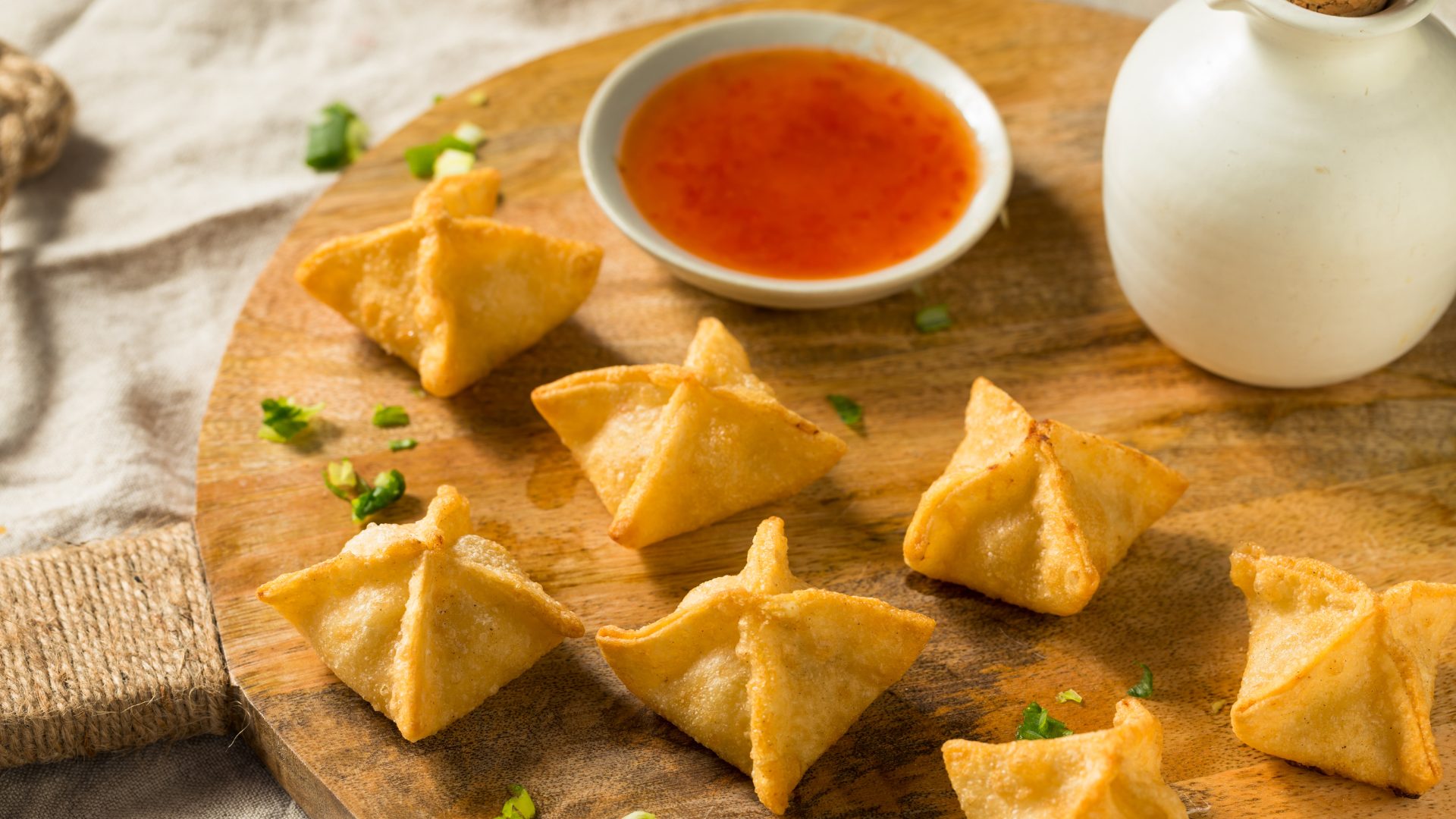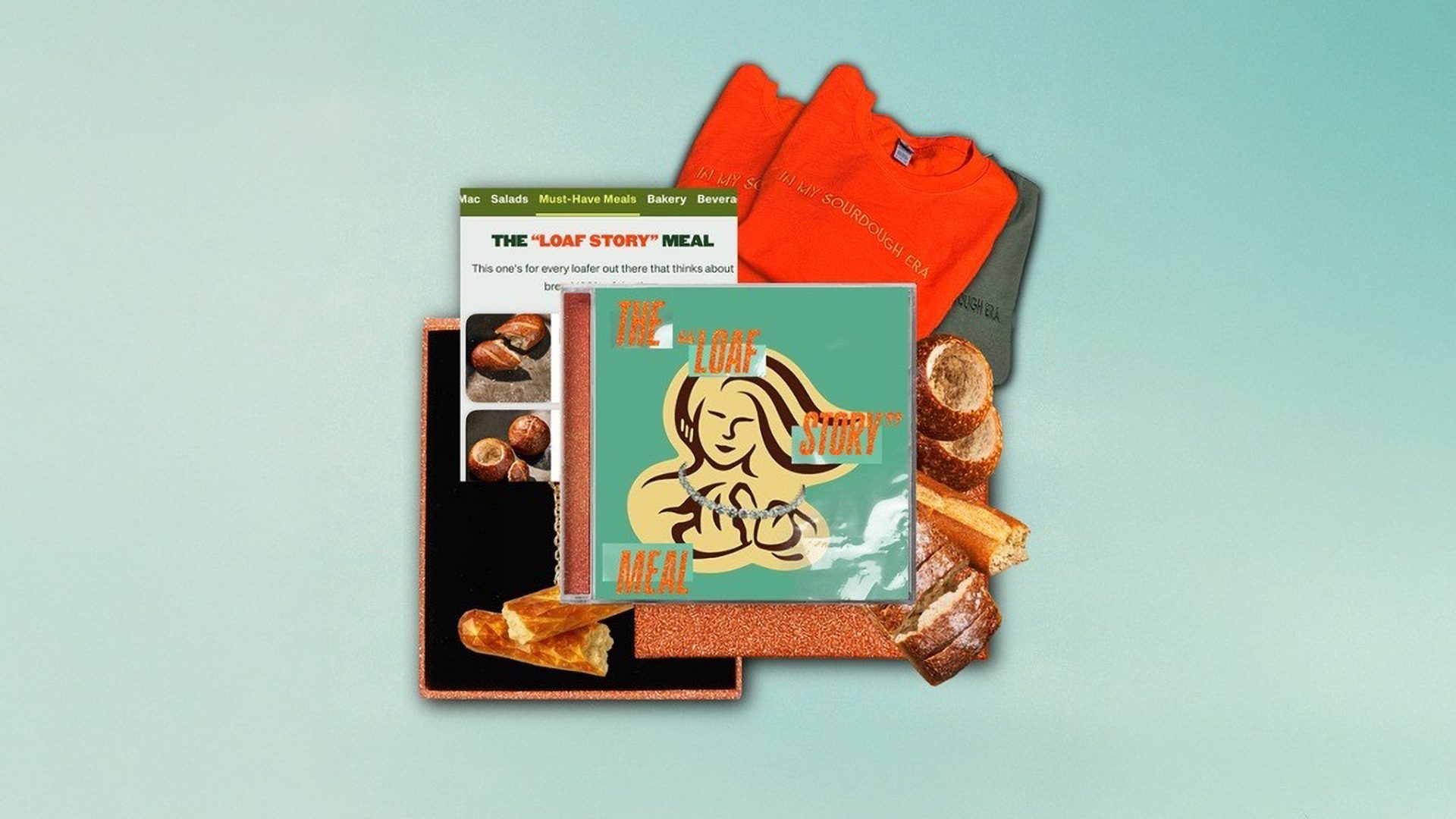
Panera Bread
Taylor Swift is a bit of a musical Midas. Everything she touches – or merely mentions – seemingly turns to gold, or in this case, green and orange.
After the pop star revealed the album cover of her 12th album, The Life of a Showgirl, on the New Heights podcast hosted by NFL players Travis and Jason Kelce, F&B brands ranging from Dunkin’ to Applebee’s swiftly launched cheeky ad campaigns, social media posts, and playfully redesigned logos nodding to its sparkly orange and green aesthetic.
One brand, however, launched an LTO promotion inspired by a different portion of the interview, in which Swift waxed poetic about her love for baking sourdough.
“We’re very deep in a sourdough obsession that has taken over my life,” Swift confessed during the episode, prompting Panera Bread to debut its “Loaf Story Meal.”
Available exclusively via the app, the deal includes three different bread options – a loaf of its Country Rustic Sourdough, a 2-pack of its Sourdough Bread Bowl, and/or a French Baguette – paired with a collection of “In My Sourdough Era” sweatshirts, which have already sold out.
However, sourdough was already having a moment before Swift’s pun-laden profession of love for it. So, where did its growth spurt begin?
From Pandemic Pastime to Cultural Phenomenon
Sourdough kicked off its comeback story in the spring of 2020, when thousands of consumers turned to baking to relieve stress as pandemic-related lockdowns persisted.
Google searches for “sourdough starter” hit record highs, and bubbling jars of starter and crusty, homemade loaves flooded social media feeds.
“Sourdough starter jars became one of the period’s most recognizable domestic trophies,” said Bryan Quoc Le, a food scientist, food industry consultant, and the author of the book 150 Food Science Questions Answered, as well as a long-time Taylor Swift fan, AKA “Swiftie.”
“Yeast and flour were sold out in supermarket shelves; likewise, neighborhood bakeries reported surging demand and millions of first-time bakers learned the slow and very hands-on rhythm of fermentation,” Le told FI, noting that post-pandemic innovations like ready-to-bake sourdough kits, frozen dough, and pre-packaged loaves have kept the category relevant.
“I think this pandemic hobby has stuck around because you truly cannot beat the taste and smell of homemade bread. There’s definitely a learning curve and it takes patience and plenty of failed loaves, but you’ll never forget this skill once you learn how to make your perfect loaf through trial and error,” Taylor Maxwell, an Oklahoma-based baker, told FI.
For many, sourdough almost became a cultural symbol of resilience – bread made from the simple ingredients that required only patience and care – forging a strong emotional connection reinforced by a centuries-old tradition.
That connection has clearly endured, long after restaurants reopened and grocery store shelves were restocked with yeast – and it’s likely to enjoy further growth, in light of Swift’s confession.
“Taylor Swift openly shared her personal baking habits and it sparked consumer trends. Swift’s recent revelation of her love for baking sourdough could bring renewed attention and demand, particularly among younger demographics and Swifties, who are known for amplifying her lifestyle choices into mainstream cultural phenomena,” Le said.
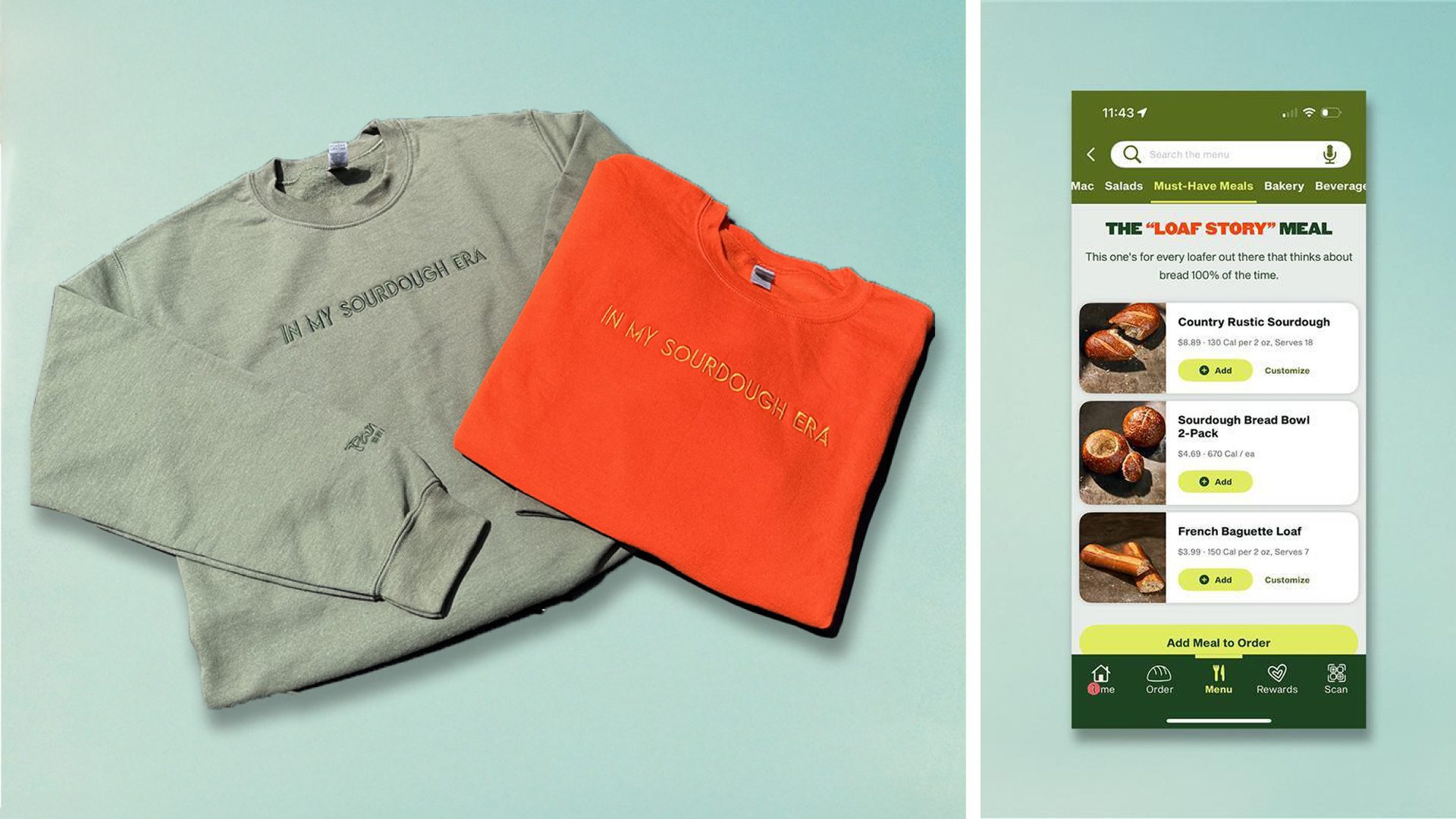
Panera Bread
Innovations and Opportunities
“What started in home kitchens has since transitioned into broader foodservice and retail innovation,” Le told FI. “Supermarkets now stock shelf-stable and frozen sourdough options, quick-service restaurants have integrated sourdough buns and bases into menus, and brands are experimenting with sourdough pizza crusts, snack crackers, and even instant mixes.”
Le expects to see sourdough expand into snack hybrids, clean-label offerings, and functional bakery items, such as digestive wellness products – and Niveditha Ravishankar, R&D manager at McCain Foods, echoes this prediction.
“One of the biggest drivers behind the sourdough trend in the American food market is the positioning of this bread in the ‘better for you’ category since it involves the process of fermentation using a starter culture with yeast and lactic acid bacteria and has a lower glycemic index while offering a unique flavor and a dense texture,” Ravishankar said.
“With the clean label movement gaining momentum, this gives consumers the opportunity to make their own bread at home knowing the exact amounts of all the ingredients that go into the process.”




